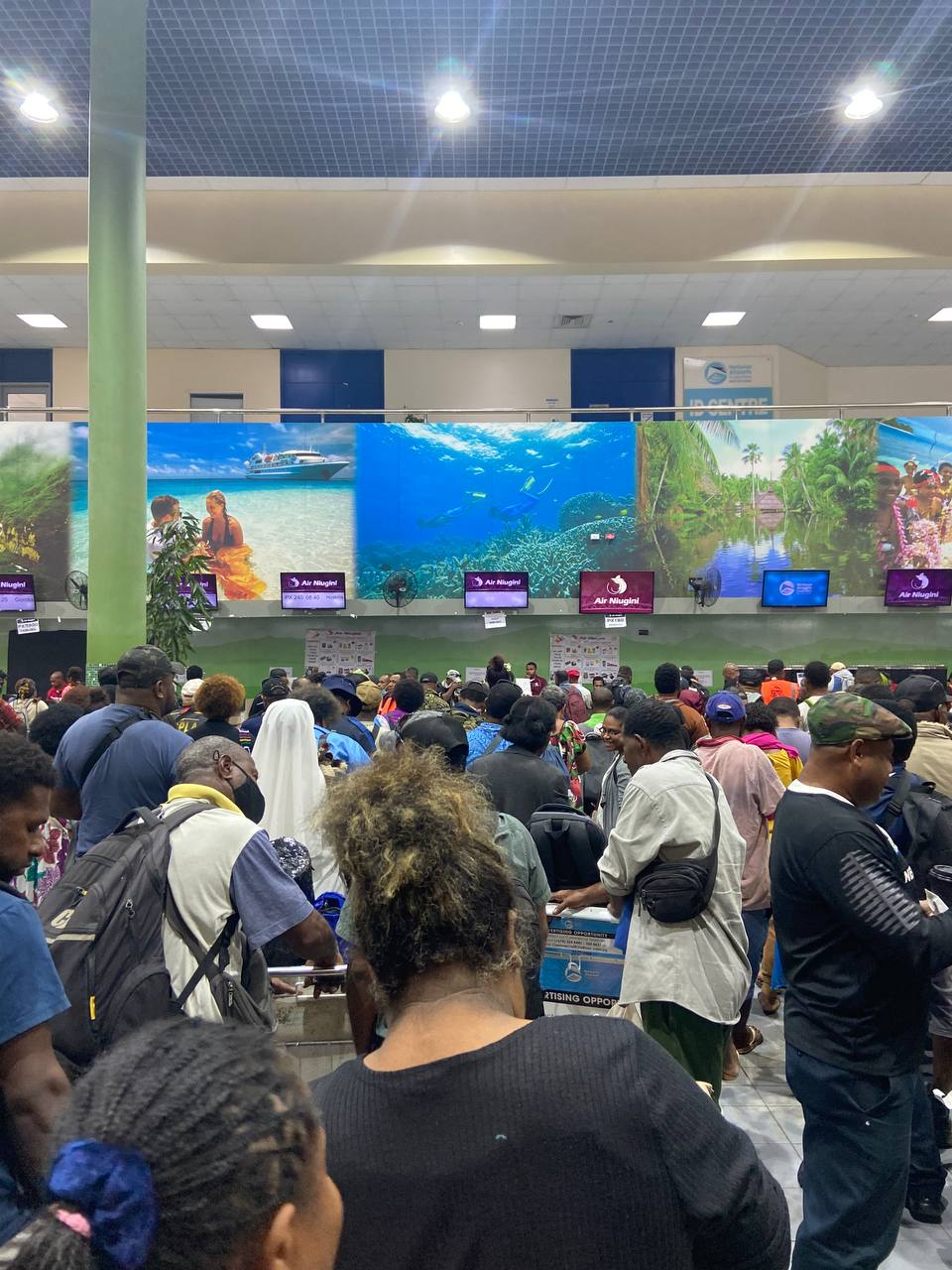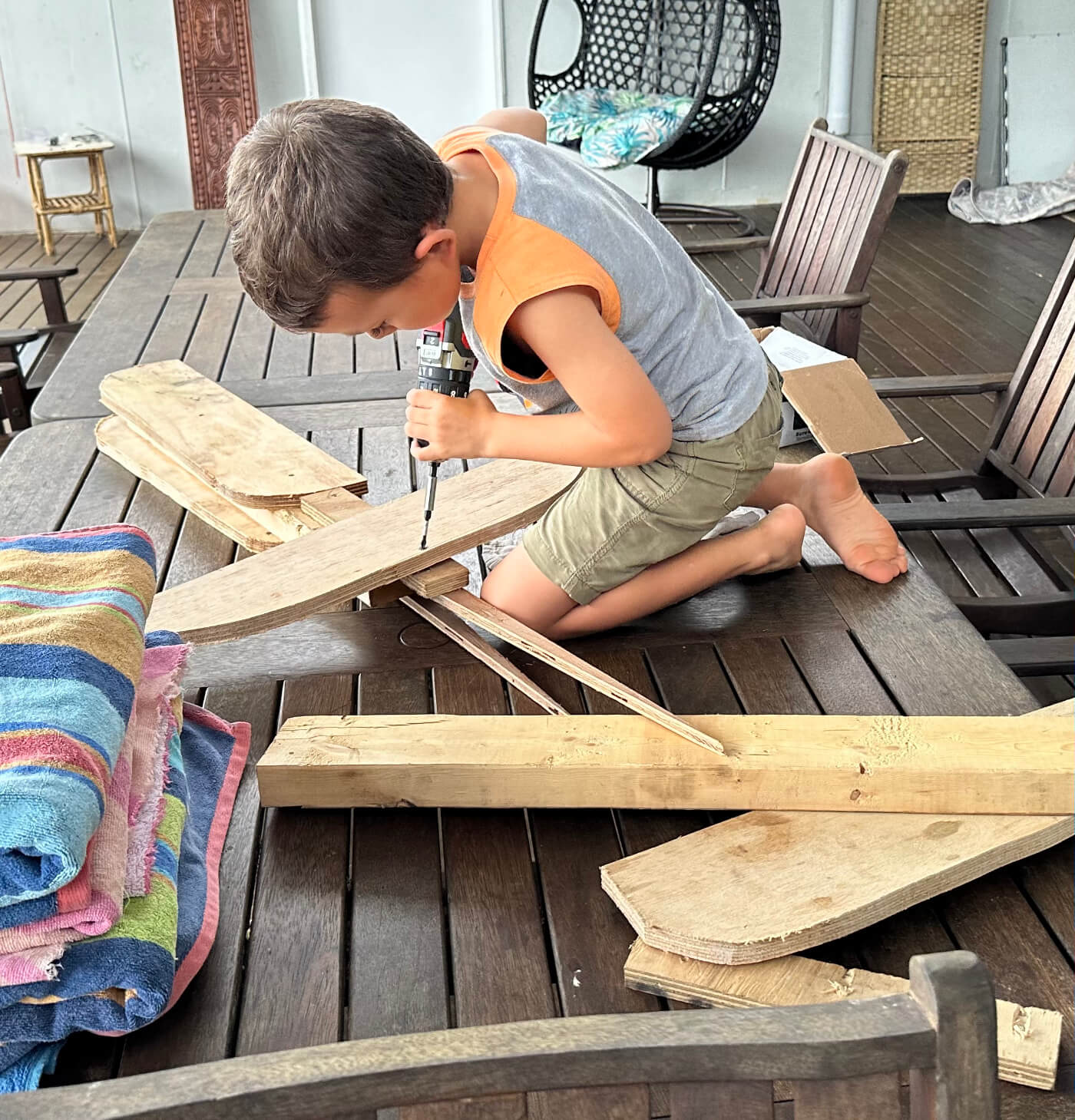Featured Image (Above): A Cessna 182 sits just outside Hangar B awaiting it’s weight and balance check. This Cessna is special since it’s been retrofitted with a diesel engine which will help the ministry save a ton on fuel costs. It’ll get inspected by the FAA and then partially disassembled, packed into a shipping container, and shipped to Uganda.
It’s been two weeks since I started working in the hangar and so far I’ve learned a couple things: This is going to be harder than I thought, I’ve got a lot to learn, and Dave (the safety, maintenance, and all around good guy) only brews Maxwell House in the lunchroom coffee maker. If I want better coffee, I have to bring it in myself. I’m OK with all of that.

First, here’s how a normal day looks (so far). I’m supposed to be in the lunchroom for the morning meeting at 7:30 although Dave arrives at 7:00 and starts brewing the coffee. I get there around 7:15 and pour myself a cup for the morning meeting. The meeting involves prayer requests and praises, along with announcements for the day. On Wednesdays we take turns leading a half hour devotional.
After the morning meeting is over, I meet with my project supervisor so we can discuss yesterday’s problems, the overall progress of the project, and the goals for the day. Then we get started! Around 4:00 I go to the lunchroom, get out my logbook, and record what I did during the day. This is one way that MMS keeps tabs on what I’m getting experience doing. If I get too much experience stripping paint and not enough working on engines, they’ll shift me over to another project so I can gain more experience in another area. It’s a great system.
After I get home I study the A&P textbooks for two or three hours and then every Friday I get tested on the chapter that I was assigned. It’s a ten question test put together by Bob, the Director of Training, with actual questions that may appear on the A&P knowledge test from the FAA. If I fail I have to redo that chapter. So far that hasn’t happened! The study schedule goes on like that for a year and half. They consider you “in training” the first 18 months of your apprenticeship. During the last 12 months MMS expects you to be “in production” meaning you actually get work done and are concentrating on building experience.
There’s multiple projects going on in the hangars all at the same time. My project leader right now is Jenny. Yes, girls can work on airplanes too! The project is a 4-place (or 4 seat) Bearhawk from a mission organization that runs an orphanage in Haiti. This plane has multiple discrepancies, or “squawks,” that need to be fixed. A squawk is the sound a bird makes when something is wrong so it stands to reason that vibrations, noises, or other problems that are noticed by a pilot during flight are called “squawks.” These squawks are put on record which is called “a squawk list.” They are often vague in nature and most often can be fixed some other time. The Bearhawk is in our hangar to get it’s squawk list, or discrepancies, fixed.

One of the problems with the airplane, the pilot noted, was that the engine ran hotter than it should. Once the engine cowling (the hood of the airplane) was removed, the highly trained specialists at MMS Aviation soon found the problem; The engine bay was full of mud! I don’t know how much you know about airplanes but generally they shouldn’t be used to plow fields. There was even a hornet’s nest between one of the cylinders! Welcome to mission aviation.

The Bearhawk has aluminum covered wings but a fabric covered fuselage (body) and control surfaces (aileron, flaps, elevators, rudder). The fabric had holes in it and was nearing the end of its lifespan. It was time to replace it! So my job, being the new guy, was to strip the old fabric off of the frames and then clean off the glue that held it on. This is harder than it sounds.
I assumed before I started that working on airplanes is meticulous, detail oriented, and time consuming but now I’m realizing how true that is. I have to get a pick and scrape the paint out from between every rivet head in the aileron and flap. There’s hundreds of rivets!

We were using an environmentally friendly paint stripper and we were struggling to get the glue off of the frames. Then one of the long time volunteers who was helping me mentioned something called “El Dorado.”
“It makes your eyes water and it burns like crazy when you get it on you but it works better than this stuff does.”
I was interested. Soon we needed more stripper and I suggested we get some of the El Dorado stuff. All parties involved thought it was a good idea. We put our safety glasses on and yanked on our rubber gloves. When you use rubber gloves in a hot hangar, your hands start smelling like feet – which is unpleasant. I wondered if gloves were really necessary. Then I got some El Dorado splattered on my legs. “Hmm…” I thought, “that doesn’t burn at all.” About ten seconds later I was yipping around the hangar like a hyena who stepped on a snake. They were right, El Dorado does work well.
I suggested that we could just sandblast everything. I was informed the ailerons and flaps are made from 2024-T3 aluminum alloy which is coated with a thin layer of pure aluminum for corrosion resistant. Sand blasting would rip off the soft layer of pure aluminum and damage the material. It needed to be hand cleaned, that’s just the way it is. I feel like I’m a bull in a China shop and the people at MMS are trying to teach me to be a ballerina. It’s a tough transition.
MMS Aviation doesn’t just offer an 30 month apprenticeship, they also allow staff from other organizations to come for short term internships just so they can get real life experience. In the three weeks since I’ve been working at MMS, I met Ritah who is with Samaritan’s Purse in Kenya, Tim who is from Switzerland and is involved in Mozambique (Africa) with Mercy Air, and a Mark, a dude from Canada who’s working on getting his U.S. citizenship so it opens more serving opportunities.
Meanwhile, at home Janice is busy trying to rid the house of pests. We just ordered two gallons of spider spray and are planning on sanctifying the basement of our house with maximum judgement and minimum grace.
The other night Janice found two raccoons on our deck and tried to chase them off with a broom. She repeatedly whacked the big one right between the eyes. It yawned, took a step back, and chuckled. Janice retreated to the house, angry and determined. “What’s the biggest gun you have?” she asked me. I raised an eyebrow. Now we’re communicating!
Mowing the yard is proving to be difficult. We are borrowing a zero turn mower from the in-laws because they still haven’t found a farm to call their own. We graciously offered to babysit the poor mower so it didn’t have to sit all lonely and scared in a barn somewhere. The problem is that our yard is built on a ski slope. You have to estimate your trajectory, drive over the brink, and try to skid in a straight line while the rushing wind makes your lips are flap around your ears. Then you have to drive around the bottom of the yard to get back up to the top since you can’t just go straight up the hill.

Keep praying that I can absorb all this information that is getting shot at me. I feel like I’m up against a wall and there’s a whole squadron of artillery bombarding me with informational cannon balls. Keep praying that Janice finds her fit in all of this. Keep praying that we both keep communicating through all the stress and change.
Blessings from Ohio,
Josh
Latest
- Post 205: Dumping Your Money Into A Slot Machine And Hoping A Boarding Pass Will Come Out
- Post 204: Kiwi, The Green Car Alarm.
- Post 203: Phantom Potholes & Life Lessons
- Photo Bomb 1: Bats, Bugs, Boisterous Children
- Post 202: Simple Solutions Versus Wild Ambition




Leave a Reply